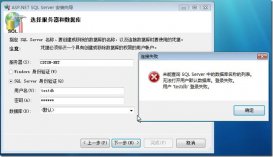相信大家在各大网站都会遇到,登录时,在登录框出现下次免登陆/一个月免登陆的类似选项,本文就是讲解如何实现,在这记录一下,也算是做个备忘录合集,如果文中有错,欢迎大家指出
为啥说自登陆一次呢,因为当访问某个页面时,如果第一次自动登录失败时,你下次刷新访问时还再次走自动登录流程,就会出现死循环。
本文代码示例框架为Spring MVC,下面就讲解实现该功能的需要掌握哪些知识:cookies与过滤器
1.cookies
何为Cookies:Cookies为 Web 应用程序保存用户相关信息提供了一种有用的方法。例如,当用户访问您的站点时,您可以利用 Cookie 保存用户首选项或其他信息,这样,当用户下次再访问您的站点时,应用程序就可以检索以前保存的信息。
我们看一下是如何保存cookies和如何删除cookies
保存cookies
|
1
2
3
4
5
6
7
8
9
10
11
12
13
14
|
String newUserName = null;try { newUserName = URLEncoder.encode(username, "UTF-8");//把用户名转码,防止用户名是中文,cookies保存中文取出会乱码} catch (UnsupportedEncodingException e) { e.printStackTrace();}Cookie nameCookie = new Cookie("username", newUserName);String pwdMd5Cook = MD5Util.MD5(Pwd);Cookie pwdCookie = new Cookie("pwd", pwdMd5Cook);// 保存加密后的密码nameCookie.setMaxAge(60 * 60 * 24 * 365);// 用户名保存一年pwdCookie.setMaxAge(60 * 60 * 24 * 30);// 密码保存30天// 发送Cookie信息到浏览器response.addCookie(nameCookie);response.addCookie(pwdCookie); |
删除cookies,删除很简单,但值得注意的时,删除cookies,跟保存cookies一定要在同一个控制层,不然会找不到保存的cookies,导致删除不了
|
1
2
3
|
Cookie cookie = new Cookie("pwd", null);cookie.setMaxAge(0);// 删除密码cookieresponse.addCookie(cookie); |
2.Filter-过滤器
Filter也称之为过滤器,它是Servlet技术中最实用的技术,Web开发人员通过Filter技术,对web服务器管理的所有web资源:例如Jsp, Servlet, 静态图片文件或静态 html 文件等进行拦截,从而实现一些特殊的功能。例如实现URL级别的权限访问控制、过滤敏感词汇、压缩响应信息等一些高级功能。
实现方法:继承Filter接口,并实现其doFilter方法。在web.xml文件中对编写的filter类进行注册,并设置它所能拦截的资源
|
1
2
3
4
5
6
7
8
9
10
11
12
13
14
15
16
17
|
<filter>指定一个过滤器。<filter-name>用于为过滤器指定一个名字,该元素的内容不能为空。<filter-class>元素用于指定过滤器的完整的限定类名。<init-param>元素用于为过滤器指定初始化参数,它的子元素<param-name>指定参数的名字,<param-value>指定参数的值。在过滤器中,可以使用FilterConfig接口对象来访问初始化参数。<filter-mapping>元素用于设置一个 Filter 所负责拦截的资源。一个Filter拦截的资源可通过两种方式来指定:Servlet 名称和资源访问的请求路径<filter-name>子元素用于设置filter的注册名称。该值必须是在<filter>元素中声明过的过滤器的名字<url-pattern>设置 filter 所拦截的请求路径(过滤器关联的URL样式)<servlet-name>指定过滤器所拦截的Servlet名称。<filter> <filter-name>suicaiFilter</filter-name> <filter-class>com.suicai.filter.suicaiFilter</filter-class></filter><filter-mapping> <filter-name>suicaiFilter</filter-name> <url-pattern>/*</url-pattern></filter-mapping> |
下面看一下实际应用代码:
|
1
2
3
4
5
6
7
8
9
10
11
12
13
14
15
16
17
18
19
20
21
22
23
24
25
26
27
28
29
30
31
32
33
34
35
36
37
38
39
40
41
42
43
44
45
46
47
48
49
50
51
52
53
54
|
public class suicaiFilter implements Filter { @Override public void destroy() { } @Override public void doFilter(ServletRequest request, ServletResponse response,FilterChain chain) throws IOException, ServletException { HttpServletRequest req=(HttpServletRequest)request; HttpServletResponse res=(HttpServletResponse)response; HttpSession session = req.getSession(); String requestURI = req.getRequestURI(); String param = req.getQueryString(); String url = req.getServletPath(); if(param!=null){ url = url+"?"+param; } if(requestURI.contains("js") || requestURI.contains("css") || requestURI.contains("images")){ //不过滤css,js,images等静态资源 chain.doFilter(request, response); }else if(requestURI.contains("/info/")||requestURI.contains("/gys/")){ //过滤前台访问页面,跟前台个人中心(供应商后台),自动登录一次,登录不成功不进行操作,个人中心登录不成功,则跳到登录页面 ProviderInfo providerInfo = (ProviderInfo) session.getAttribute("providerInfo_gys"); String IsAutomaticLogin = (String) session.getAttribute("IsAutomaticLogin");//是否已经走过自动登录流程标识 if(requestURI.contains("/info/") && !requestURI.contains("/login")){ //访问门户等不需要必须登录的(登录除外),只尝试登录一次,如果不成功,不进行操作 if(providerInfo==null && IsAutomaticLogin == null){ req.getSession().setAttribute("goURL", url); res.sendRedirect(req.getContextPath() + "/common/automaticLogin"); }else if(providerInfo==null && IsAutomaticLogin != null ){ chain.doFilter(request, response); }else{ chain.doFilter(request, response); } }else if(requestURI.contains("/gys/")){//访问个人中心,自登陆一次,不成功跳转到登录页面 if(providerInfo==null && IsAutomaticLogin == null){ req.getSession().setAttribute("goURL", url); res.sendRedirect(req.getContextPath() + "/common/automaticLogin"); }else if(providerInfo==null && IsAutomaticLogin != null ){ session.setAttribute("redirectUrl", url); res.sendRedirect(req.getContextPath() + "/login.jsp?redirectUrl="+url); }else{ chain.doFilter(request, response); } }else{ chain.doFilter(request, response); } }else{ //不过滤 chain.doFilter(request, response); } } @Override public void init(FilterConfig arg0) throws ServletException { }} |
从代码中可知,需要一个是否已经自动登录过的标识(IsAutomaticLogin),该标识是在走自动登录时(不管成不成功)保存起来的
3.结合上面提供知识,下面为整体代码展示,如发现不对地方,欢迎大家指出
|
1
2
3
4
5
6
7
8
9
10
11
12
13
14
15
16
17
18
19
20
21
22
23
24
25
26
27
28
29
30
31
32
33
34
35
36
37
38
39
40
41
42
43
44
45
46
47
48
49
50
51
52
53
54
55
56
57
58
59
60
61
62
63
64
65
66
67
68
69
70
71
72
73
74
75
76
77
78
79
80
81
82
83
84
85
86
87
88
89
90
91
92
93
94
95
96
97
98
99
100
101
102
103
104
105
106
107
108
109
110
111
112
113
114
115
116
117
118
119
120
121
122
123
124
125
126
127
128
129
130
131
132
133
134
135
136
137
138
139
140
141
142
143
144
145
146
147
148
149
150
151
152
|
@Controller@RequestMapping("/common")public class CommonController{ /** * 自动登录方法 * @param request * @param response * @param username * @param pwd * @param ProviderInfo 供应商账户信息model * @return */ @RequestMapping("/automaticLogin") public String automaticLogin(HttpServletRequest request,ServletResponse response,@CookieValue(value = "username", required = false) String username,@CookieValue(value = "pwd", required = false) String pwd,ProviderInfo ProviderInfo) { // 保存需求登录前的链接 String goURL = (String) session.getAttribute("goURL"); if (username == null) {//cookies中没有用户名,肯定不需要自动登录 session.setAttribute("IsAutomaticLogin", "0"); return "redirect:" + goURL; } else { try { username = URLDecoder.decode(username, "UTF-8");//转义,防止中文 } catch (UnsupportedEncodingException e) { e.printStackTrace(); } } // cookie失效 session一定为空,因为登录时,一定会把用户名保存在cookie中 if ("".equals(username) || username == null) {// 使用session登录不了,不进行任何操作,不在进入这个方法 session.setAttribute("IsAutomaticLogin", "0"); return "redirect:" + goURL; } else { // cookie中没有密码,判断session为不为空,如果为空,说明没有登录,如果不为空,说明,用户是选择不记住密码登录(所以cookie中没有密码) if ("".equals(pwd) || pwd == null) { ProviderInfo customer1 = (ProviderInfo) session.getAttribute("providerInfo_gys"); if (customer1 == null) {// 使用session登录不了,不进行任何操作,不在进入这个方法 session.setAttribute("IsAutomaticLogin", "0"); return "redirect:" + goURL; } else { // 已经登录,不再进入这个方法 return "redirect:" + goURL; } } else { // cookie中有密码,判断session为不为空,如果为空,说明没有登录,如果不为空,说明已经登录 ProviderInfo customer1 = (ProviderInfo) session.getAttribute("providerInfo_gys"); if (customer1 == null) {// 当前没有登录,调用cookies中的用户名跟密码进行登录 // 进行自动登录操作,登录成功后返回原来页面 ProviderInfo customer3 = ValidateDate(username); customer3.setPwd(pwd); customer3.setAccountType(6); ProviderInfo customer2 = infoService.login(customer3);//调用登录方法 if (customer2 == null) {// 自动登录失败,不再进入这个方法 session.setAttribute("IsAutomaticLogin", "0"); return "redirect:" + goURL; } else { // 登陆成功保存客户信息到session session.setAttribute("providerInfo_gys",customer2); return "redirect:" + goURL; } } else { return "redirect:" + goURL; } } } } /** * 用户登陆 * @param request * @param response * @param cus * @return */ @RequestMapping("/UserLogin") @ResponseBody public Map<String, Object> goLogin(HttpServletRequest request,HttpServletResponse response,@ModelAttribute("ProviderInfo") ProviderInfo cus) { /*省略一些逻辑判断*/ cus.setPwd(MD5Util.MD5(Pwd)); ProviderInfo providerInfo = infoService.login(cus); Map<String, Cookie> cookieMap = new HashMap<String, Cookie>(); if (providerInfo == null) { // 登陆失败,重新跳转到登陆页面 map.put("error", "密码错误"); return map; }else{ String newUserName = null; if (remember_me.equals("1")) {// 有选择一个月免登录 try { newUserName = URLEncoder.encode(username, "UTF-8"); } catch (UnsupportedEncodingException e) { e.printStackTrace(); } Cookie nameCookie = new Cookie("username", newUserName); String pwdMd5Cook = MD5Util.MD5(Pwd); Cookie pwdCookie = new Cookie("pwd", pwdMd5Cook);// 保存加密后的密码+"create" nameCookie.setMaxAge(60 * 60 * 24 * 365);// 用户名保存一年 pwdCookie.setMaxAge(60 * 60 * 24 * 30);// 密码保存30天 // 发送Cookie信息到浏览器 response.addCookie(nameCookie); response.addCookie(pwdCookie); session.setAttribute("IsAutomaticLogin",null); }else{//没有选择,删除上次可能已经选择自动登录时的密码 Cookie[] cookies = request.getCookies(); if (null != cookies) { for (Cookie cookie : cookies) { cookieMap.put(cookie.getName(), cookie); } } if (cookies != null) { for (int i = 0; i < cookies.length; i++) { if (cookieMap.containsKey("pwd")) { Cookie cookie = new Cookie("pwd", null); cookie.setMaxAge(0);// 删除密码cookie response.addCookie(cookie); } } } } // 登陆成功,保存当前user信息,保存客户信息到session map.put("ProviderInfo", providerInfo); map.put("goURL", session.getAttribute("goURL")); session.setAttribute("providerInfo_gys", providerInfo); return map; }else { map.put("error", "该供应商账号不存在"); return map; } } /** * 注销 * @return */ @RequestMapping("/logout") public String logout(HttpServletResponse response) { Map<String, Cookie> cookieMap = new HashMap<String, Cookie>(); Cookie[] cookies = request.getCookies(); if (null != cookies) { for (Cookie cookie : cookies) { cookieMap.put(cookie.getName(), cookie); } } if (cookies != null) { for (int i = 0; i < cookies.length; i++) { if (cookieMap.containsKey("pwd")) { Cookie cookie = new Cookie("pwd", null); cookie.setMaxAge(0);// 删除密码cookie response.addCookie(cookie); } } } session.setAttribute("providerInfo_gys", null); return "/index"; }} |
以上所述是小编给大家介绍的基于Cookie使用过滤器实现客户每次访问只登录一次,希望对大家有所帮助,如果大家有任何疑问请给我留言,小编会及时回复大家的。在此也非常感谢大家对服务器之家网站的支持!
原文链接:http://www.cnblogs.com/zhaixiajiao/archive/2017/06/05/6895284.html













